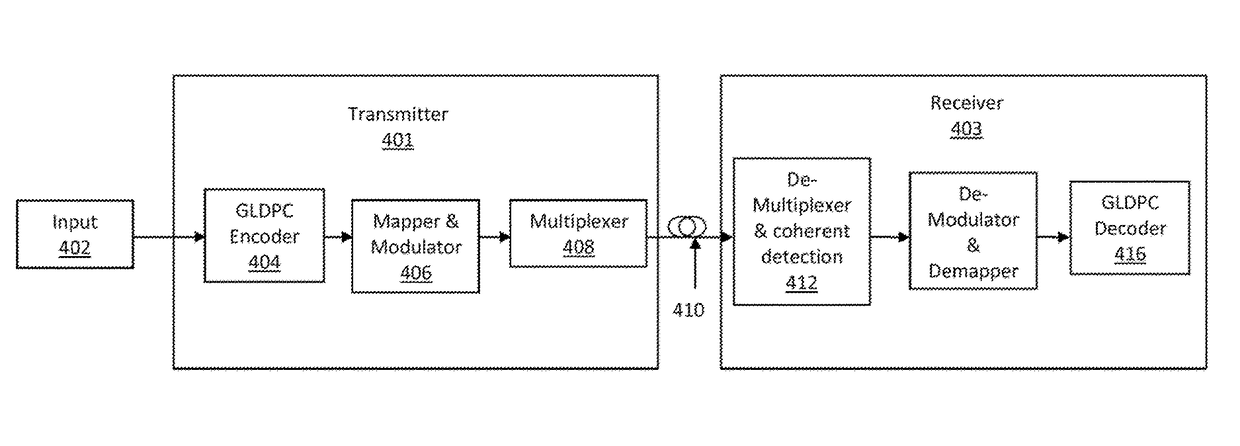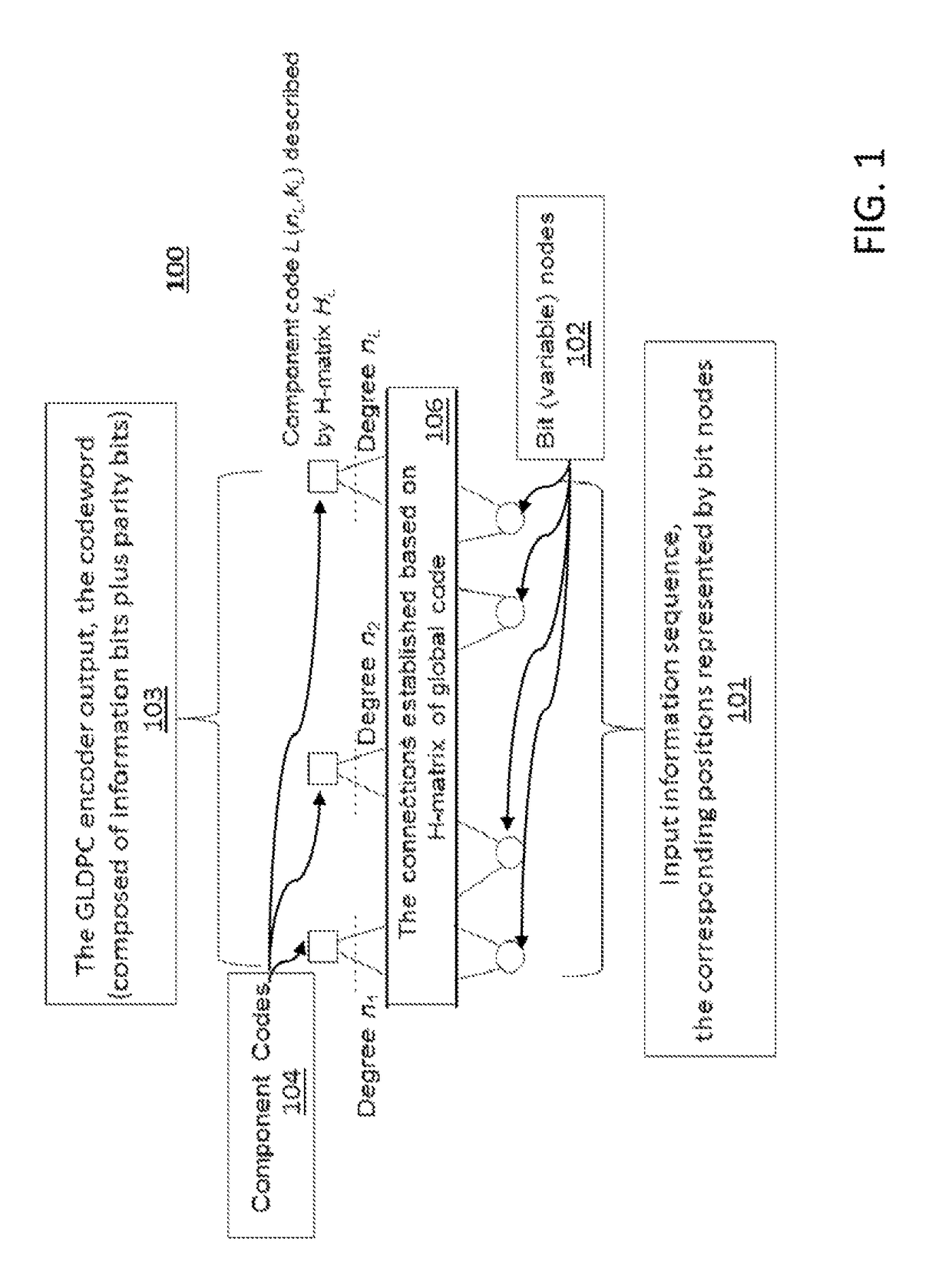Multiple component codes based generalized low-density parity-check codes for high-speed optical transport
a high-speed optical transport and parity-checking technology, applied in the field of coded modulation, can solve the problems of deteriorating the effects of fiber nonlinearities and polarization-mode dispersion (pmd), affecting the reliability of communication over the optical fiber network, and affecting the use of the network, so as to achieve the effect of increasing the strength of error correction
- Summary
- Abstract
- Description
- Claims
- Application Information
AI Technical Summary
Benefits of technology
Problems solved by technology
Method used
Image
Examples
Embodiment Construction
[0017]In accordance with the present principles, systems and methods are provided to enable ultra-high speed serial optical transport that may employ commercially available equipment operating at lower speed by employing generalized low-density parity-check (GLDPC) codes derived from multiple component codes. It is noted that GLDPC coding represents an excellent candidate for ultra-high-speed optical transport due its low decoding complexity and good error performance, in particular for column-weight-3 global codes. However, GLDPC codes based on column-weight-3 LDPC codes exhibit low code rates to be of practical importance for ultra-high-speed optical transport. As a compromising solution, conventional GLDPC codes based on column-weight-2 global codes have been studied for use in optical communication. However, this class of GDLPC codes, although of low decoding complexity, has inferior performance compared to corresponding LDPC counterparts.
[0018]Conventional systems have employed...
PUM
 Login to View More
Login to View More Abstract
Description
Claims
Application Information
 Login to View More
Login to View More - R&D
- Intellectual Property
- Life Sciences
- Materials
- Tech Scout
- Unparalleled Data Quality
- Higher Quality Content
- 60% Fewer Hallucinations
Browse by: Latest US Patents, China's latest patents, Technical Efficacy Thesaurus, Application Domain, Technology Topic, Popular Technical Reports.
© 2025 PatSnap. All rights reserved.Legal|Privacy policy|Modern Slavery Act Transparency Statement|Sitemap|About US| Contact US: help@patsnap.com



